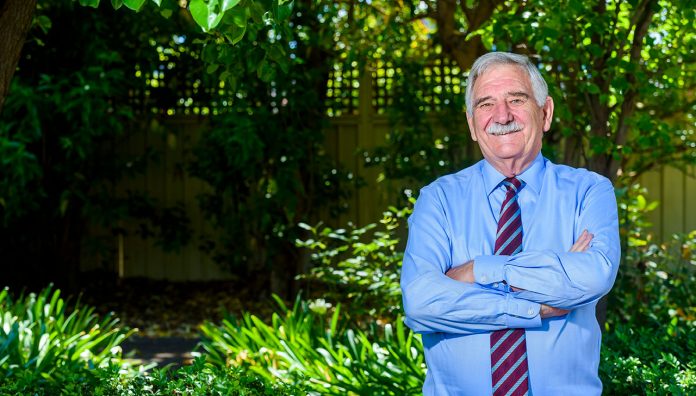University of South Australia Emeritus Professor Lloyd Sansom AO FPS has led improvements in the quality use of medicines in Australia and internationally.
When he began his career pharmacists were ‘mixing up all types of concoctions’, said the 2018 winner of the International Pharmaceutical Federation’s (FIP) Andre Bedat Award, the world organisation’s highest pharmaceutical practice award which is given every two years.
These days, some of those products might seem somewhat questionable, Emeritus Professor Sansom admits.
‘We used to prepare a range of products which today would be considered to be placebo or, at best, of marginal efficacy.
‘I can only think of about 10 medicines that I dispensed in the early 1960s that are still used regularly. Most have been surpassed by safer, more effective agents.’
As Chair of the Australian Pharmacy Advisory Council from 1990–2000 and Chair of the Pharmaceutical Benefits Advisory Committee from 2001 to 2012 among many other roles with government and industry advisory groups, what are you most proud of in a career that has spanned a range of fields in health and pharmacy – from education to research, policy and administration?
I’m pleased to have been involved in curriculum development and switching the pharmacy degree to a more clinical focus, chairing the Australian Pharmacy Advisory Council that developed the National Medicines Policy, and working with the Pharmaceutical Benefits Advisory Committee.
More recently I’ve been pleased to complete reviews of the Therapeutic Goods Administration (TGA) and the National Prescribing Service. Ultimately, it’s been a pleasure to work with a whole range of people to actually achieve outcomes for patients.
You’ve also chaired the editorial board of the Australian Pharmaceutical Formulary and Handbook (APF) for years. What changes have occurred and what can we expect in the next edition?
It’s become quite a different resource from what it started as in 1901, which was a little book on the art and mystery of the apothecary and old formularies.
Now it’s an essential practice guideline and support document; formulas only represent a small part of the publication.
We’re currently preparing the 25th edition which, for the first time, will be available electronically.
You’ve played a big role in raising awareness around quality use of medicines.
The next step is better integration across the health system so that quality use of medicines becomes inculcated across the whole sector.
We need healthcare teams where everyone’s expertise is acknowledged and utilised as appropriate.
What pharmacy has done with immunisations is a great model. We’ve simply got to support those models and develop them out.
What are the emerging challenges with quality use of medicines?
How to ensure a proper post-marketing surveillance system. To give you an example of the changing dynamic: as a result of the Therapeutic Goods Administration (TGA) review there’s now an accelerated pathway where the TGA can utilise information from the United States Food and Drug Administration, the European Medical Agency and so on.
Now we’re seeing new drugs made available earlier, which means we know less than we used to know about drugs when they come to market.
I’d like to see community pharmacy accepting the role of recording and documenting post-marketing monitoring. If they don’t take up that opportunity others – who are less qualified for the role – will.



 John Jones MPS, pharmacist immuniser and owner of My Community Pharmacy Shortland in Newcastle, NSW[/caption]
John Jones MPS, pharmacist immuniser and owner of My Community Pharmacy Shortland in Newcastle, NSW[/caption]


 Debbie Rigby FPS explaining how to correctly use different inhaler devices[/caption]
Debbie Rigby FPS explaining how to correctly use different inhaler devices[/caption]




 Professor Sepehr Shakib[/caption]
Professor Sepehr Shakib[/caption]

 Lee McLennan MPS[/caption]
Lee McLennan MPS[/caption]
 Dr Natalie Soulsby FPS, Adv Prac Pharm[/caption]
Dr Natalie Soulsby FPS, Adv Prac Pharm[/caption]
 Joanne Gross MPS[/caption]
Joanne Gross MPS[/caption]





